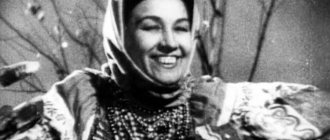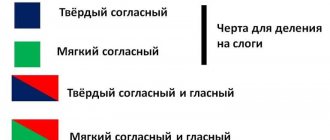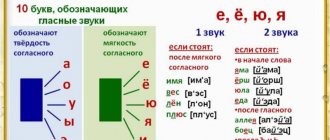Download material
so UNT / Lesson developments / Biology lessons
Biology lesson notes, grade 6 Topic: Structure and functions of root zones.
05.11.2015 5269 723 Iztaeva Karagoz Bektaevna
Type –
lesson-travel.
Form:
learning new material
Lesson objectives:
1. Consolidate knowledge about the structure of the root system, study the cellular structure and functions of the root.
2. Develop logical thinking, consolidate skills in working with a book.
3.Develop communicative communication, the ability to evaluate your own successes and the successes of other students.
Equipment.
Tables “Root zones”, tables with different types of tissues,
“Map of travel through the root system”, microscopes with ready-made preparations of plant tissues, “Scheme of the main plant tissues”, assessment sheets on each desk, algorithms for filling out the table, cards with tasks on new material, tests to test acquired knowledge, plant herbariums.
Figure 1. Root System Journey Map.
During the classes.
1. Organizational moment. Greetings.
2. Communicate the purpose of the lesson.
Teacher: “Guys, do you agree to teach a lesson in the form of a trip? After all, any journey is about learning something new and interesting.
You and I already know a little about the root. After all, knowledge helps us grow plants correctly. Each of us has to deal with plants, and everyone should know that the power of a plant lies in the root.
With even greater knowledge about the root, we will be able to care for them more effectively.
What do we not yet know well enough about the root? What new information about the root can we get in class?
(This part can be carried out in the form of a conversation. The teacher should lead the children to the goal of the lesson so that the students themselves name the goal).
3. The main part of the lesson.
Write down the topic of the lesson in your notebook.
Teacher: “We can learn more about the root by going on a journey using the map “Journey through the Root System.” (See Figure 1)
Along the way you will encounter various obstacles, you need to overcome them and score as many points as possible in order to receive the title of “Great Root System Traveler”. An evaluation sheet will help you correctly evaluate your work and the work of your comrades.” (See appendix 1)
Stage 1. A journey through the root system of a particular plant.
Students perform laboratory work “Tap and fibrous root systems.” Based on the herbarium, the type and characteristics of the root system are determined, and the data is entered into a table.
Table No. 1. Taproot and fibrous root systems.
| Plant name | Root system type | Features of the structure of the root system |
| Dandelion officinalis | Tap root system | The main root is clearly visible |
Weak students receive herbariums of familiar plants, strong students receive herbariums of plants that do not grow in the area.
Completion - 3-5 minutes. Students check their deskmate's work and grade it using a score sheet.
Teacher: “Who wants to share their impressions?”
(Answer from one student on determining the type of root system).
Halt.
Teacher: “For further travel we need to rest and take a break. At the halt we will remember interesting data about fabrics that we will need for our further journey.”
Students listen to the student's message "Plant Tissue."
Teacher: “So, what is fabric? What tissues do you think we won’t find in the root?”
Students define “tissue” and say that photosynthetic tissue cannot be found in the root.
Teacher: “Well done! You can safely hit the road. Don’t forget to evaluate your work.”
Stage 2. Journey inside the root.
Teacher: “Now we will go down the root. Do you think the cells we meet on our path are fundamentally the same? Shall we study them?
Teacher: “In order to quickly obtain the necessary and interesting information, we will divide into groups. Each group will study its own section of the root, its tissues and functions. You are also invited to look at preparations of plant tissues and find out their structure.
Group 1 (strong students). The zones of root cap, division and elongation are studied.
2. group (students of average ability). Study the suction zone.
3. group (students of average ability). Study the venue area.
4. group (students with weak abilities). Decipher the words. You need to insert the missing vowels into the words of this topic using the textbook.
The data is entered into a table.
Table No. 2. Cellular structure of the root .
| Root zones | Fabrics | Features of cell structure | Functions |
| 1. Root cap | Pokrovnaya | The cells are small with a thick membrane | Damage Protection |
| 2. Division zone | Educational | The cells are small with a thin membrane | Root growth |
| 3. Stretch zone | Educational | Elongated cells with a thin membrane | Root growth |
| 4. Suction zone | Suction | Root hair | Absorption of solutes |
| 5. Venue | Conductive | Elongated cells (vessels, sieve tubes) | Movement of substances |
| All zones | Mechanical | Thick-walled cells | Organ support |
Groups 2 and 3 receive an algorithm for filling out the table. (See Appendix 3).
Execution 10 min.
Teacher: “Everyone completed their task. Now we need to collect data on the cellular structure of the root into a single picture, and you also need to evaluate each student in your group.”
(Speech by one person from the group).
Teacher: “Okay! They did an excellent job with this task as well. We have examined the cellular structure of the root, we can go back, but the root does not want to let us out. We must fulfill his conditions - answer his questions.”
Stage 3. Halt. Consolidation of the studied material.
Teacher: “Before performing it, you need to take a break, gather your strength and thoughts. Let's try to answer a few questions together. Don’t forget to evaluate your work.”
Questions to reinforce new material.
1. How many zones does the root have? Name them.
2. How many different types of tissues are there in the root? Name and show in the table.
3. Define fabric. What tissues are not present in the root?
4. Why do plants get sick when transplanted?
5. In a bean seed that was germinated in the light, parts of the shoot soon became green, while the root retained its original color. Why did it happen? Make your guesses.
Teacher: “Has everyone gathered their thoughts and strength to overcome the last obstacle? Okay! Now everyone will try to answer the questions of the root.”
Stage 4. Performing a blank test using two differentiated options .
(Execution time 6 min.) (See appendix 4)
Self-test test using the answer table. (See Appendix No. 5)
4. Summing up.
- Our journey has ended. What have we learned?
— The root has several zones that perform several functions.
— Root functions depend on root cells.
- Now please calculate the total number of points.
Who got 20 points? Well done, you are awarded the title of “Great Root Traveler.” You will be our guides on our next journeys through the root system, the root.
- Now let’s find our grade for the lesson. (Divide the number of points by four).
5. Homework.
“You just need to share your impressions of the trip. You can display your impressions in a crossword puzzle, syncwine, drawings, you can pick up proverbs, riddles about the root.”
See the downloadable file for the full text of the material.
The page contains only a fragment of the material.




